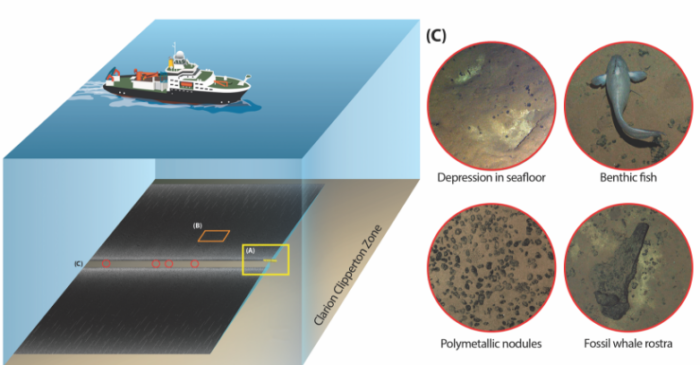A new study by UK’s National Oceanography Centre (NOC) and the University of Southampton has revealed a series of depressions forming mysterious “tracks” on the seafloor, which may be an unprecedented record of deep-diving whales.
The observations were made by an autonomous underwater vehicle (AUV) in a region of the Pacific Ocean targeted for deep-sea nodule mining.
These tracks were not related to mining or scientific operations within the area, as they were too large to be created by fish or any other typical deep-sea animals; and they were not thought to be formed by geological processes, such as gas or fluid seepage; However, they resembled those observed in other regions of the world’s oceans attributed to whales, leading the researchers to suggest that a deep-diving whale is the likely perpetrator.
[smlsubform prepend=”GET THE SAFETY4SEA IN YOUR INBOX!” showname=false emailtxt=”” emailholder=”Enter your email address” showsubmit=true submittxt=”Submit” jsthanks=false thankyou=”Thank you for subscribing to our mailing list”]
In 2015, the RRS James Cook visited the Clarion Clipperton Zone (CCZ), with a mission to characterise the habitats and species within the CCZ. The expedition used the Autosub6000 AUV along with other data collection methods to form an environmental baseline for this area. The research team noticed a series of depressions on the seafloor that could not always be detected or resolved in any of the other AUV data, including the photography.
These markings are comparable to those detected in other areas of the world’s oceans attributed to deep-diving whales. If the tracks are indeed made by a whale, they would extend the known maximum dive depth of a marine mammal by over 1000 m.
Beaked whales have been reported to make similar markings on deep-sea mud volcanoes and there are reports of sperm whales ploughing the deep seafloor and getting entangled in telecommunication cables. In shallower waters, on the continental shelf, other species of whale are using the seafloor for feeding or removing dead skin, however, in the deep ocean, it is still unclear why whales would make such marks.
This research was published in Royal Society Open Science and was funded by the European Union Seventh Framework Programme under the MIDAS (Managing Impacts of Deep-seA reSource exploitation) project. Funding was also provided from the UK Natural Environment Research Council (NERC) through National Capability funding to NOC.
See the full report in the PDF herebelow


































































